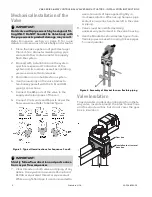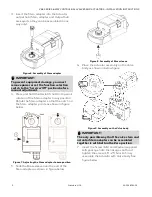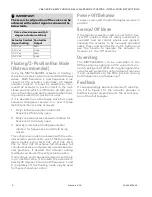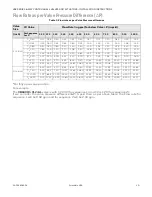
VB6 SERIES 6-WAY CONTROL BALL VALVES AND ACTUATORS - INSTALLATION INSTRUCTIONS
3
Printed in USA
31-00380M-02
Mechanical Installation of the
Valve
IMPORTANT:
Hold valve with pipe wrench by hexagonal fit
-
ting ONLY. Do NOT handle the Valve body with
the pipe wrench; product damage may result.
Refer Dimension section on page 9 for more
details on dimensions of Valve body and actuator.
1. Clean the lines upstream of particles larger
than 1/16 in. diameter (welding slag, pipe
scale and other contaminants) to properly
flush the system.
2. Proceed with installation once the system
specifics (expansion/contraction of the
system and its medium as well as operating
pressures) are within tolerances.
3. Eliminate air or air-bubbles from system.
4. Use the markings on the valve bodies to
familiarize yourself with the A, B, and AB
piping connections.
5. Connect the AB-ports of the valve to the
supply and return pipes of the coil.
6. Connect the A-ports and B-ports as per the
flow sequences. Refer to below figure.
Figure 1. Typical flow directions for Sequence 1 and 2.
IMPORTANT:
Strictly follow flow direction and port connec
-
tions as per flow sequences.
7. Clear threads on both valve and piping of any
debris. Honeywell recommends Permabond
A1044 or equivalent thread or pipe sealant.
While using Teflon tape, it is recommended to
use 4-6 rounds of tape applied tightly in
clockwise rotation. When using hemp as pipe
sealant, ensure no strands are left in the valve
or piping.
8. Valves must be installed avoiding
unnecessary pull or twist in the valve housing.
9. Use the Bracket as shown below figure if non-
flexible pipes are used in piping to keep pipes
firm and parallel.
Figure 2. Assembly of Bracket for non-flexible piping
Valve Insulation
To avoid water condensation dripping from the 6-
way valve, insulate around the pipe connections
and the structural box, but do not cover the gear
box in insulation.
Gear box
Insulation to structural
base box






























